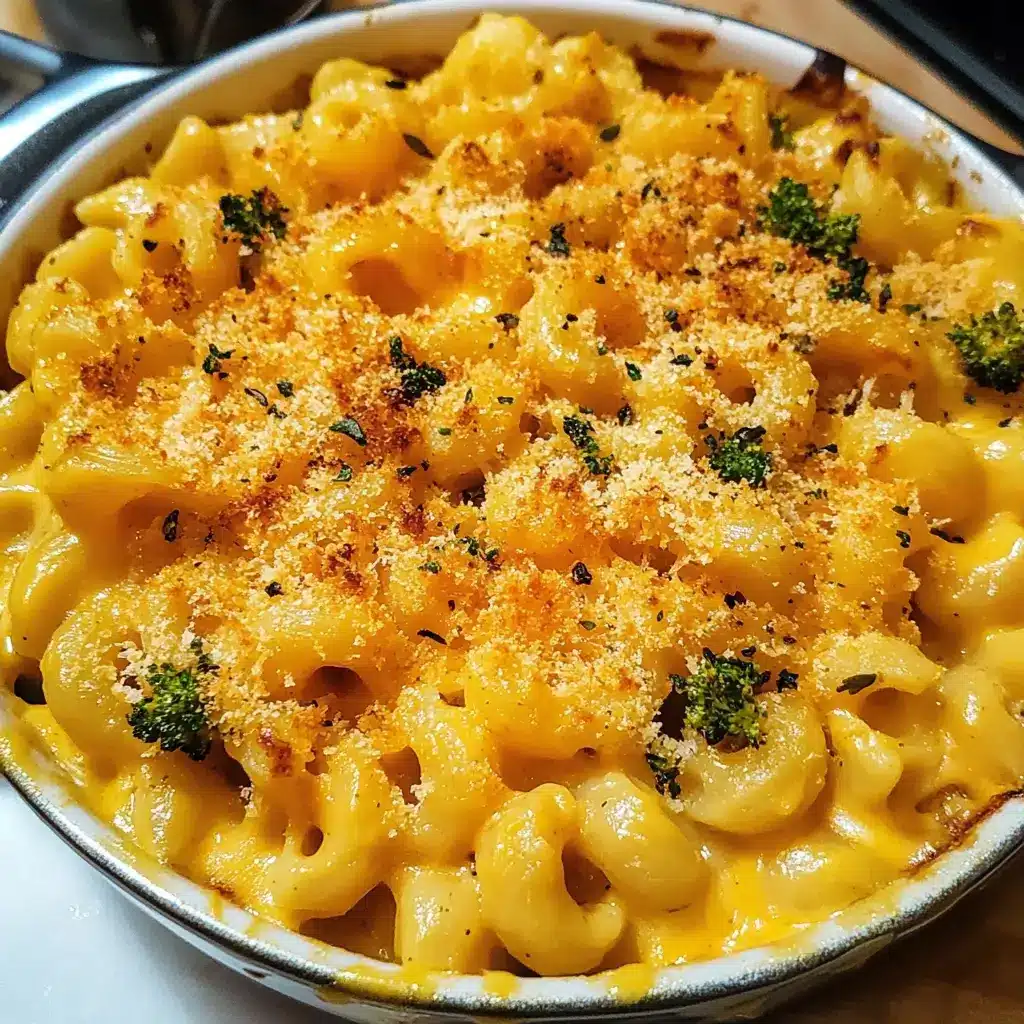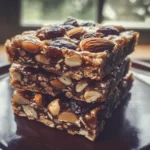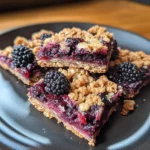There are certain dishes that just scream comfort, nostalgia, and pure, unadulterated satisfaction. For me, and I suspect for many of you, mac and cheese sits firmly at the top of that list. Growing up, it was the ultimate treat, the go-to after a long day, the simple pleasure that never failed to bring a smile. When our family transitioned towards a more plant-based lifestyle, finding a truly great vegan mac and cheese became something of a quest. We tried countless versions – some watery, some bland, some with textures that were just… off. There were moments of doubt, whispers of “maybe it’s just not possible.” Then came this recipe. It wasn’t just “good for vegan”; it was genuinely, shockingly, unbelievably delicious. The first time I served it, nervously watching my notoriously picky kids and skeptical husband take their first bites, the silence was quickly replaced by enthusiastic murmurs and requests for seconds. It was creamy, it was cheesy (without any dairy!), it was deeply savory, and best of all, it was easy. This recipe didn’t just satisfy a craving; it became a beloved staple in our home, proof that plant-based eating doesn’t mean sacrificing flavour or comfort. It’s the recipe I share with friends exploring veganism, the one I whip up on busy weeknights, and the dish that consistently disappears first at potlucks. Prepare to be amazed – this easy vegan mac and cheese might just change your comfort food game forever.
The Ultimate Easy Vegan Mac and Cheese Recipe
This recipe focuses on simple ingredients and straightforward steps to deliver a rich, creamy, and deeply satisfying vegan mac and cheese experience. The secret lies in a cleverly crafted sauce using cashews for creaminess, nutritional yeast for that essential cheesy flavour, and a few key seasonings for depth.
Ingredients:
- Pasta:
- 1 lb (16 oz / 450g) Elbow Macaroni (or your favorite pasta shape – shells, rotini, or penne work well)
- For the Creamy Cashew Sauce:
- 1.5 cups (approx. 200g) Raw Cashews, soaked (see instructions for soaking options)
- 1.5 cups (360ml) Fresh Water (use the cashew soaking water for extra creaminess if desired, or fresh water for a milder flavour)
- 1/2 cup (30g) Nutritional Yeast (this is key for the cheesy flavour – do not skip!)
- 2 tablespoons (30ml) Fresh Lemon Juice (adds brightness and tang)
- 1 tablespoon (15ml) Dijon Mustard (adds depth and complexity)
- 1 teaspoon Garlic Powder
- 1 teaspoon Onion Powder
- 1 teaspoon Salt (adjust to taste – start with less if your cashews are salted)
- 1/4 teaspoon Black Pepper, freshly ground
- Optional: 1/4 teaspoon Turmeric (primarily for a more golden yellow colour)
- Optional: 1/2 teaspoon Smoked Paprika (for a smoky depth)
- For Finishing (Optional):
- Vegan Butter or Olive Oil (1-2 tablespoons, for extra richness)
- Fresh Parsley, chopped (for garnish)
- Extra Black Pepper
- Vegan Parmesan alternative (sprinkled on top)
- Toasted Breadcrumbs (for a baked version)
Step-by-Step Instructions for Creamy Perfection
Follow these simple steps to create your perfect bowl of vegan mac and cheese. The process is quicker than you might think!
- Soak the Cashews: This step is crucial for achieving a silky smooth sauce. You have two main options:
- Quick Soak: Place the raw cashews in a heatproof bowl. Cover them completely with boiling water. Let them soak for at least 15-20 minutes. Drain and rinse well.
- Overnight Soak: Place the raw cashews in a bowl and cover them with plenty of cold water. Let them soak at room temperature for at least 4 hours, or preferably overnight in the refrigerator. Drain and rinse well. (This method often yields the creamiest results).
- Cook the Pasta: While the cashews are soaking (if using the quick method) or just before blending the sauce, bring a large pot of salted water to a rolling boil. Add the pasta and cook according to package directions until al dente (slightly firm to the bite). It’s important not to overcook the pasta, as it will continue to absorb liquid from the sauce.
- Reserve Pasta Water & Drain: Before draining the pasta, carefully reserve about 1 cup (240ml) of the starchy pasta water. This water is liquid gold and can be used later to adjust the sauce consistency if needed. Drain the pasta thoroughly using a colander and return it to the warm pot (off the heat). You can toss it with a teaspoon of olive oil or vegan butter to prevent sticking if desired.
- Prepare the Cheese Sauce: Add the drained and rinsed soaked cashews to a high-speed blender. Add the 1.5 cups of fresh water (or reserved soaking water), nutritional yeast, lemon juice, Dijon mustard, garlic powder, onion powder, salt, black pepper, and optional turmeric and/or smoked paprika.
- Blend Until Smooth: Secure the lid on the blender. Start blending on a low speed, gradually increasing to high. Blend for 1-3 minutes, or until the sauce is completely smooth, creamy, and lump-free. You may need to stop and scrape down the sides of the blender jug once or twice to ensure everything is incorporated. The power of your blender will affect the blending time – aim for absolute smoothness.
- Combine Sauce and Pasta: Pour the creamy cashew cheese sauce directly over the cooked pasta in the pot. Stir gently but thoroughly to ensure every piece of pasta is coated in the luscious sauce.
- Adjust Consistency (If Needed): Check the consistency of the mac and cheese. If it seems too thick for your liking, add a splash of the reserved starchy pasta water, a tablespoon at a time, stirring until you reach your desired creaminess. The sauce will thicken slightly as it sits and cools.
- Warm Through (Optional): If the pasta has cooled down significantly, you can place the pot back over low heat for 1-2 minutes, stirring constantly, just to warm everything through. Be careful not to scorch the bottom. Alternatively, adding the hot sauce directly to the hot, just-drained pasta is usually sufficient.
- Serve Immediately: Taste and adjust seasoning if necessary (more salt, pepper, or even a pinch more nutritional yeast). Serve the vegan mac and cheese hot, garnished with fresh parsley, extra black pepper, or a sprinkle of vegan Parmesan if desired.
Nutritional Insights: A Healthier Indulgence
While still a comforting and satisfying dish, this vegan mac and cheese offers some nutritional advantages over its traditional dairy-based counterpart.
- Servings: This recipe typically makes 4 generous main course servings or 6-8 side dish servings.
- Calories Per Serving (Approximate): Based on 4 main course servings, each serving contains approximately 550-650 calories. Note: This is an estimate and can vary significantly based on the specific brand of pasta used, optional additions like vegan butter, and precise serving size.
Key Nutritional Highlights:
- Healthy Fats: The primary source of fat comes from cashews, which provide heart-healthy monounsaturated fats. Unlike the saturated fat found in dairy cheese, these fats are beneficial in moderation.
- Plant-Based Protein: Cashews and pasta (especially whole wheat or protein-enriched varieties) contribute plant-based protein, essential for muscle repair and satiety.
- B Vitamins: Nutritional yeast is a powerhouse of B vitamins, often including B12 (check your specific brand, as it’s usually fortified). B vitamins are crucial for energy metabolism and nervous system function.
- Dietary Fiber: Depending on your pasta choice (whole wheat provides more), this dish can offer a decent amount of dietary fiber, which aids digestion and helps regulate blood sugar levels.
- Dairy-Free & Cholesterol-Free: Being entirely plant-based, this recipe is naturally free from lactose and dietary cholesterol.
While delicious and packed with some beneficial nutrients, remember that this is still an energy-dense comfort food. Enjoy it as part of a balanced diet.
Quick & Easy: Preparation Time Breakdown
One of the beauties of this recipe is its relative speed, especially if you plan ahead with the cashew soaking.
- Cashew Soaking Time:
- Quick Soak: 15-20 minutes (using boiling water)
- Overnight Soak: 4-8 hours (or longer in the fridge)
- Active Preparation Time: Approximately 10 minutes (measuring ingredients, prepping the blender)
- Cooking Time: Approximately 15 minutes (boiling water, cooking pasta, blending sauce, combining)
- Total Time (using Quick Soak): Approximately 25-30 minutes
- Total Time (using Overnight Soak): Approximately 15-20 minutes of active cooking time (plus the inactive soaking time)
This makes it a fantastic option for weeknight dinners when time is limited but comfort is desired.
Serving Suggestions: Beyond the Bowl
This versatile vegan mac and cheese can be enjoyed in numerous ways. Here are some ideas to elevate your serving game:
- The Classic Comfort:
- Serve it straight from the pot into bowls.
- Garnish generously with freshly cracked black pepper and chopped fresh parsley.
- A sprinkle of vegan Parmesan adds an extra layer of savoury flavour.
- Baked Mac and Cheese Dream:
- Transfer the prepared mac and cheese to an oven-safe baking dish.
- Top with a generous layer of panko breadcrumbs (toss the breadcrumbs with a little melted vegan butter or olive oil first for extra crispiness).
- Optional: Sprinkle some shredded vegan cheddar alternative over the top before adding breadcrumbs.
- Bake at 375°F (190°C) for 15-20 minutes, or until the top is golden brown and bubbly.
- Loaded Mac and Cheese Bowls:
- Serve as a base and add your favourite toppings:
- Steamed broccoli florets or roasted Brussels sprouts
- Sautéed mushrooms and onions
- Vegan bacon bits or crumbled vegan sausage
- BBQ pulled jackfruit or shredded BBQ tofu
- A drizzle of hot sauce (like Sriracha or buffalo sauce)
- Caramelized onions
- Sun-dried tomatoes
- Serve as a base and add your favourite toppings:
- Perfect Side Dish:
- Serve smaller portions alongside your favourite main courses:
- Vegan meatloaf
- Grilled veggie burgers or sausages
- A large green salad
- BBQ ribs (vegan style)
- Crispy tofu nuggets
- Serve smaller portions alongside your favourite main courses:
- Kid-Friendly Fun:
- Serve with a side of steamed green peas or corn (or mix them right in!).
- Use fun pasta shapes.
- Offer mild toppings like nutritional yeast for “extra cheese.”
Pro Tips for Mac and Cheese Mastery
Take your easy vegan mac and cheese from great to absolutely phenomenal with these five expert tips:
- Achieve Ultimate Creaminess: The key lies in soaking the cashews properly and using a high-speed blender. Don’t skimp on the soaking time, especially if your blender isn’t top-of-the-line. Blend for the full recommended time, scraping down the sides, until absolutely no graininess remains. For an even richer sauce, consider substituting some of the water with unsweetened plain plant-based milk (like soy, oat, or almond milk) or adding a tablespoon of refined coconut oil or vegan butter to the blender.
- Master the Flavour Balance: The combination of nutritional yeast (cheesy), lemon juice (tangy brightness), and Dijon mustard (savoury depth) is crucial. Taste the sauce before adding it to the pasta and adjust seasonings. Does it need more salt? More tang (lemon)? More cheesy funk (nutritional yeast)? Don’t be afraid to tweak it slightly to perfectly match your palate. A tiny pinch of cayenne pepper can also add a subtle warmth without making it spicy.
- Pasta Perfection Matters: Cook your pasta al dente. Mushy pasta will result in a less appealing texture overall. Remember that the pasta will continue to soften slightly as it sits in the warm sauce. Also, don’t rinse the pasta after draining (unless the package specifically instructs you to), as the starch on the surface helps the sauce cling beautifully. Using pasta shapes with ridges or cups (like shells, rotini, cavatappi) is excellent for holding onto that creamy sauce.
- Unlock Colour and Depth with Spices: While optional, turmeric adds that classic yellow mac and cheese hue without significantly altering the taste. Smoked paprika adds a lovely savoury, smoky dimension that many people enjoy. Experiment with other spices too – a pinch of nutmeg can enhance the creamy notes, while a dash of white pepper offers a different kind of warmth than black pepper.
- Storage and Reheating Strategy: Vegan cashew-based sauces tend to thicken considerably when refrigerated. Store leftovers in an airtight container in the fridge for up to 3-4 days. To reheat, gently warm it on the stovetop over low heat, adding a splash of water or unsweetened plant milk (a tablespoon at a time) and stirring continuously until it reaches your desired creamy consistency again. You can also reheat it in the microwave, stirring every 30-45 seconds and adding liquid as needed. Avoid high heat, which can make the sauce separate or scorch.
Frequently Asked Questions (FAQ)
Here are answers to some common questions about making this easy vegan mac and cheese:
1. Can I make this recipe gluten-free?
Absolutely! Simply substitute the regular pasta with your favourite gluten-free pasta variety. Cook the gluten-free pasta according to its specific package directions, being careful not to overcook it, as some GF pastas can become mushy quickly. The cashew cheese sauce is naturally gluten-free. Ensure your nutritional yeast and other seasonings are certified gluten-free if required for celiac disease.
2. Is there a nut-free alternative to cashews?
Yes, while cashews provide unparalleled creaminess, you can achieve a similar result with nut-free options, though the flavour and texture will differ slightly. A popular alternative is using a combination of boiled potatoes and carrots for creaminess and colour, often blended with sunflower seeds (soaked) or white beans (like cannellini). Another option is using raw sunflower seeds (soaked like cashews) as the primary base, potentially adding a bit of silken tofu for extra smoothness. You’ll need to adjust liquid amounts and seasonings accordingly when using substitutes.
3. How do I store leftovers and how long do they last?
Store any leftover vegan mac and cheese in an airtight container in the refrigerator. It should stay fresh for up to 3-4 days. As mentioned in the tips, the sauce will thicken upon chilling.
4. Can I freeze vegan mac and cheese?
Freezing cashew-based sauces can sometimes result in a slightly grainy or separated texture upon thawing, although many people do it successfully. If you choose to freeze it, store it in a freezer-safe airtight container for up to 2-3 months. Thaw it overnight in the refrigerator. Reheat gently on the stovetop over low heat, adding splashes of water or plant milk and stirring constantly to restore creaminess. Adding a bit more nutritional yeast or a touch of vegan butter during reheating can help improve the texture. A baked version often freezes and reheats slightly better.
5. What exactly is nutritional yeast and is it necessary?
Nutritional yeast (often called “nooch”) is a deactivated yeast, usually a strain of Saccharomyces cerevisiae. It’s sold as yellow flakes or powder and has a naturally savoury, nutty, cheesy flavour profile. It’s a staple in vegan cooking precisely because it imparts that umami-rich, cheese-like taste without dairy. For this recipe, nutritional yeast is essential for achieving the characteristic mac and cheese flavour. It cannot be substituted with baker’s yeast or brewer’s yeast, which have very different tastes. Look for it in the health food section of most supermarkets or online.

Easy Vegan Mac and Cheese Recipe
Ingredients
- Pasta:
- 1 lb (16 oz / 450g) Elbow Macaroni (or your favorite pasta shape – shells, rotini, or penne work well)
- For the Creamy Cashew Sauce:
- 1.5 cups (approx. 200g) Raw Cashews, soaked (see instructions for soaking options)
- 1.5 cups (360ml) Fresh Water (use the cashew soaking water for extra creaminess if desired, or fresh water for a milder flavour)
- 1/2 cup (30g) Nutritional Yeast (this is key for the cheesy flavour – do not skip!)
- 2 tablespoons (30ml) Fresh Lemon Juice (adds brightness and tang)
- 1 tablespoon (15ml) Dijon Mustard (adds depth and complexity)
- 1 teaspoon Garlic Powder
- 1 teaspoon Onion Powder
- 1 teaspoon Salt (adjust to taste – start with less if your cashews are salted)
- 1/4 teaspoon Black Pepper, freshly ground
- Optional: 1/4 teaspoon Turmeric (primarily for a more golden yellow colour)
- Optional: 1/2 teaspoon Smoked Paprika (for a smoky depth)
- For Finishing (Optional):
- Vegan Butter or Olive Oil (1-2 tablespoons, for extra richness)
- Fresh Parsley, chopped (for garnish)
- Extra Black Pepper
- Vegan Parmesan alternative (sprinkled on top)
- Toasted Breadcrumbs (for a baked version)
Instructions
- Soak the Cashews: This step is crucial for achieving a silky smooth sauce. You have two main options:
- Quick Soak: Place the raw cashews in a heatproof bowl. Cover them completely with boiling water. Let them soak for at least 15-20 minutes. Drain and rinse well.
- Overnight Soak: Place the raw cashews in a bowl and cover them with plenty of cold water. Let them soak at room temperature for at least 4 hours, or preferably overnight in the refrigerator. Drain and rinse well. (This method often yields the creamiest results).
- Cook the Pasta: While the cashews are soaking (if using the quick method) or just before blending the sauce, bring a large pot of salted water to a rolling boil. Add the pasta and cook according to package directions until al dente (slightly firm to the bite). It’s important not to overcook the pasta, as it will continue to absorb liquid from the sauce.
- Reserve Pasta Water & Drain: Before draining the pasta, carefully reserve about 1 cup (240ml) of the starchy pasta water. This water is liquid gold and can be used later to adjust the sauce consistency if needed. Drain the pasta thoroughly using a colander and return it to the warm pot (off the heat). You can toss it with a teaspoon of olive oil or vegan butter to prevent sticking if desired.
- Prepare the Cheese Sauce: Add the drained and rinsed soaked cashews to a high-speed blender. Add the 1.5 cups of fresh water (or reserved soaking water), nutritional yeast, lemon juice, Dijon mustard, garlic powder, onion powder, salt, black pepper, and optional turmeric and/or smoked paprika.
- Blend Until Smooth: Secure the lid on the blender. Start blending on a low speed, gradually increasing to high. Blend for 1-3 minutes, or until the sauce is completely smooth, creamy, and lump-free. You may need to stop and scrape down the sides of the blender jug once or twice to ensure everything is incorporated. The power of your blender will affect the blending time – aim for absolute smoothness.
- Combine Sauce and Pasta: Pour the creamy cashew cheese sauce directly over the cooked pasta in the pot. Stir gently but thoroughly to ensure every piece of pasta is coated in the luscious sauce.
- Adjust Consistency (If Needed): Check the consistency of the mac and cheese. If it seems too thick for your liking, add a splash of the reserved starchy pasta water, a tablespoon at a time, stirring until you reach your desired creaminess. The sauce will thicken slightly as it sits and cools.
- Warm Through (Optional): If the pasta has cooled down significantly, you can place the pot back over low heat for 1-2 minutes, stirring constantly, just to warm everything through. Be careful not to scorch the bottom. Alternatively, adding the hot sauce directly to the hot, just-drained pasta is usually sufficient.
- Serve Immediately: Taste and adjust seasoning if necessary (more salt, pepper, or even a pinch more nutritional yeast). Serve the vegan mac and cheese hot, garnished with fresh parsley, extra black pepper, or a sprinkle of vegan Parmesan if desired.





